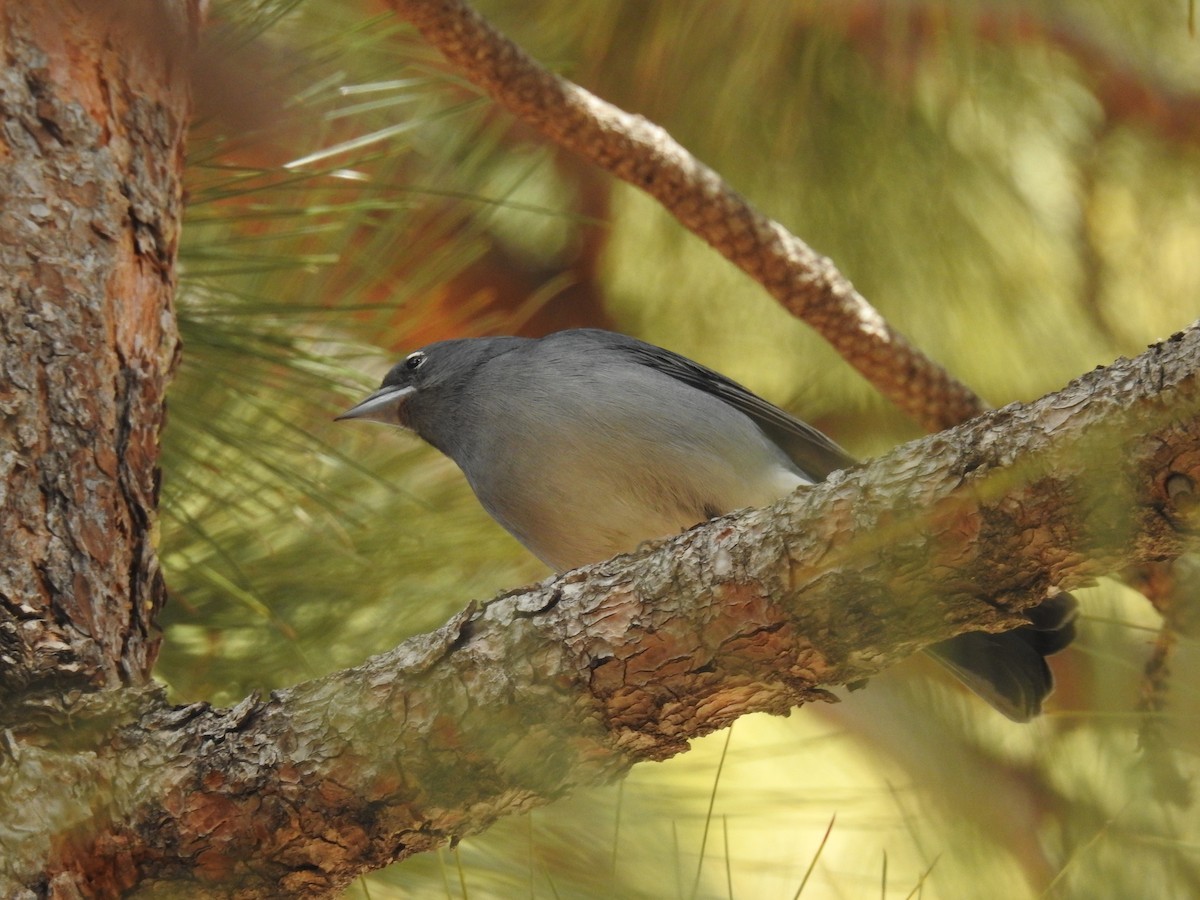Tenerife Blue Chaffinch
A species of Chaffinches and Brambling Scientific name : Fringilla teydea Genus : Chaffinches and Brambling
Tenerife Blue Chaffinch, A species of Chaffinches and Brambling
Botanical name: Fringilla teydea
Genus: Chaffinches and Brambling
Content
Description General Info
 Photo By Ashwin Viswanathan
Photo By Ashwin Viswanathan Description
Tenerife blue chaffinches resemble common chaffinches, but they are noticeably larger, and have a thicker bill. They are characteristically more uniform in their plumage, and they lack a dark cap. Females are a dull grey-brown, but can be distinguished from chaffinches by their weaker wing bars. Breeding males are unmistakable, with the namesake largely blue plumage and a grey bill. 
Size
17 cm
Nest Placement
Tree
Feeding Habits
Tenerife Blue Chaffinch's primary diet consists of Canary pine seeds, along with seeds from various shrubs and insects like beetles and butterflies. Nestlings are fed caterpillars and pine seeds. In non-breeding seasons, tenerife Blue Chaffinch pivots to Myrica faya seeds. Foraging occurs on the ground or in pine trees, where tenerife Blue Chaffinch employs a methodical search for food, sometimes catching insects mid-flight. Feeding can be solitary or in small groups, occasionally joining mixed-species flocks.
Habitat
Tenerife Blue Chaffinch's habitat mainly constitutes mature Canary pine forests, which typically have a rich undergrowth of shrubs like tagasaste and codeso. These birds are also found in mixed stands with other tree species such as tree-heath, holly, and introduced Monterey pine, as well as within laurel sections of pine forests. They demonstrate a preference for thinned forest areas, likely due to higher ground cover, and may venture into gardens and cultivated lands outside the breeding season.
Dite type
Granivorous
General Info
Feeding Habits
Bird food type
Behavior
The Tenerife blue chaffinch's song is shorter and weaker than that of the common chaffinch, and the flight call is croakier. It primarily eats Canary Island pine seeds. Like the common chaffinch, but, unlike most other finches, its young are fed extensively on insects. Breeding from the end of April to late July or early August, it builds a nest from pine needles and broom branches, and lays two eggs. This bird is not migratory. Individuals may form small flocks outside the breeding season, sometimes associating with common chaffinches and other finches. 
Distribution Area
This bird is found only in the highlands of Tenerife. The species' primary habitat is mountain Canary Island pine (Pinus canariensis) forest. It is most common in coniferous forest areas with dense undergrowth, but it is also found in laurel and pine woodland, tree-heath, and scrub. It prefers habitat at around 1,100–2,000 m (3,600–6,600 ft), but it will descend in bad weather. 

 Photo By Ashwin Viswanathan
Photo By Ashwin Viswanathan